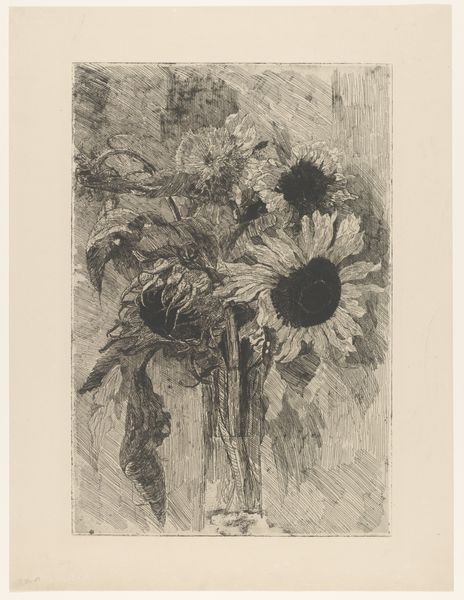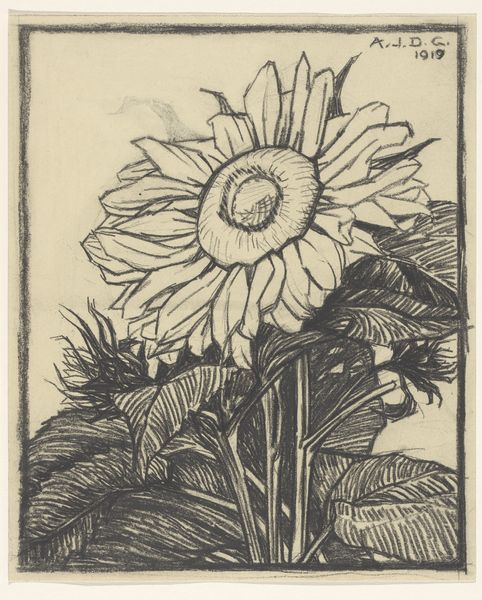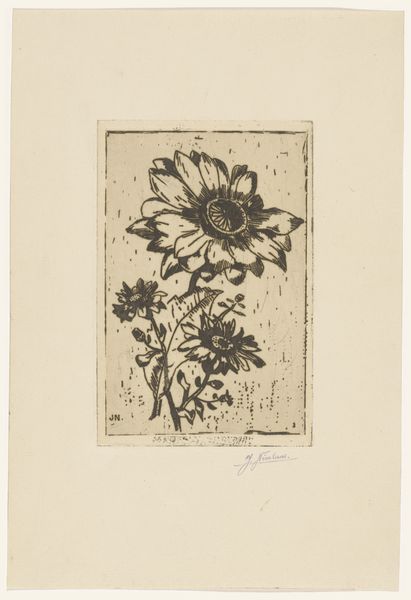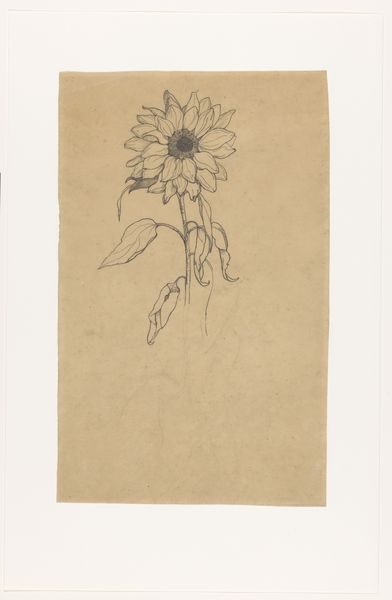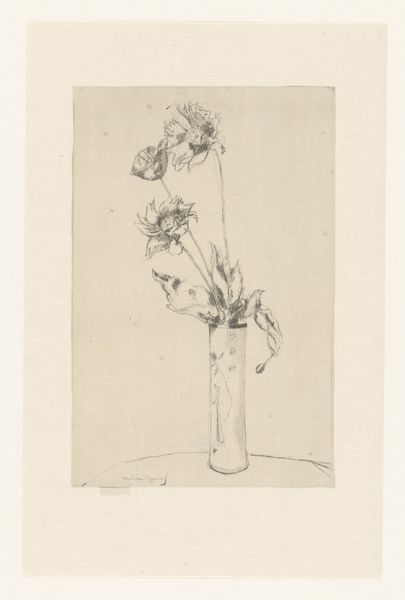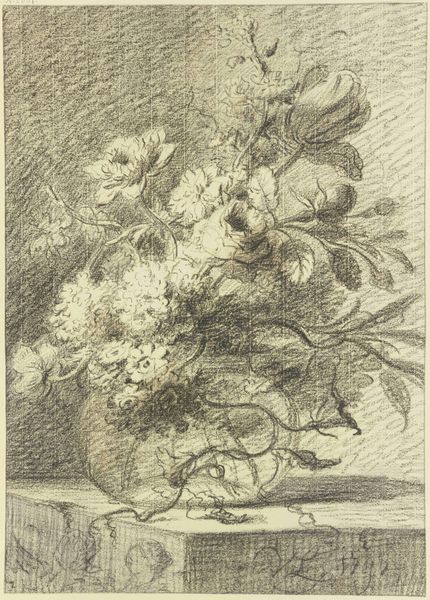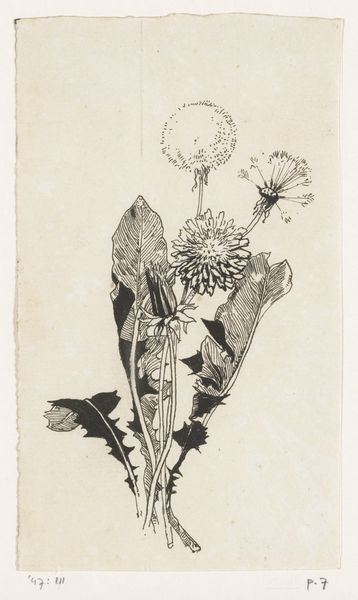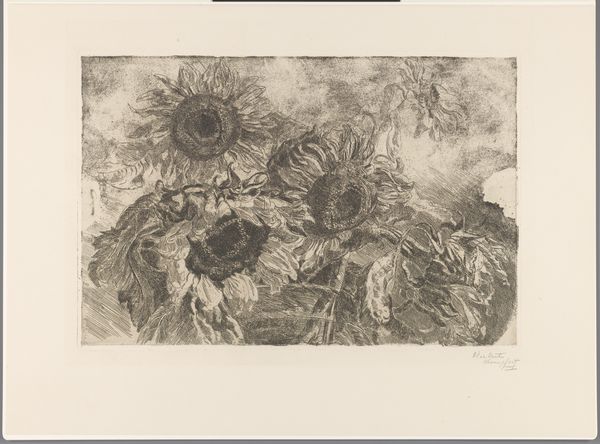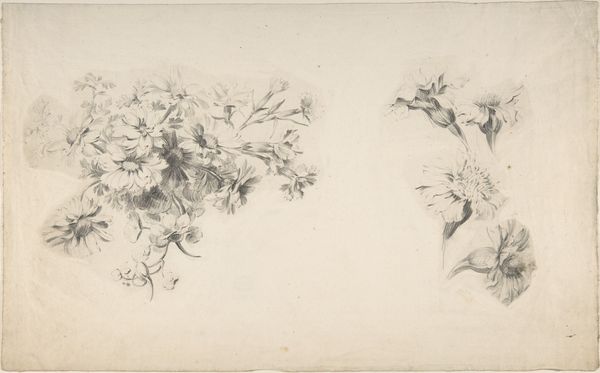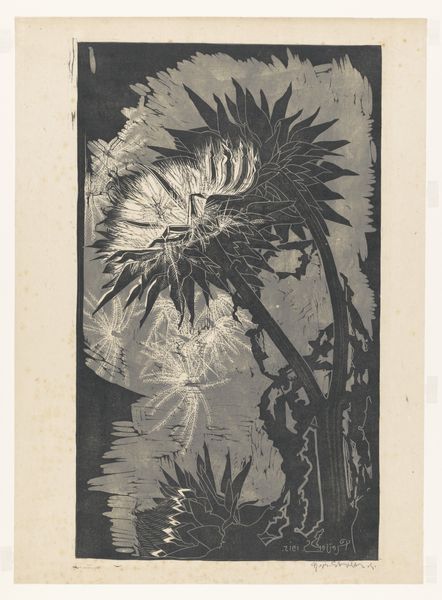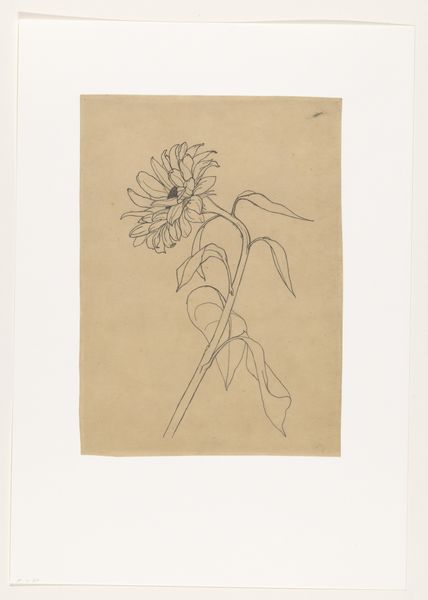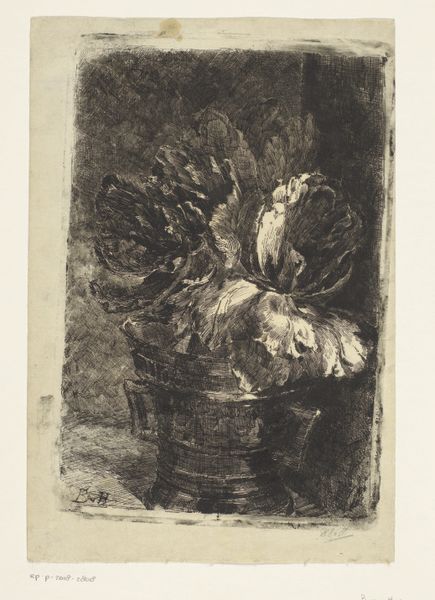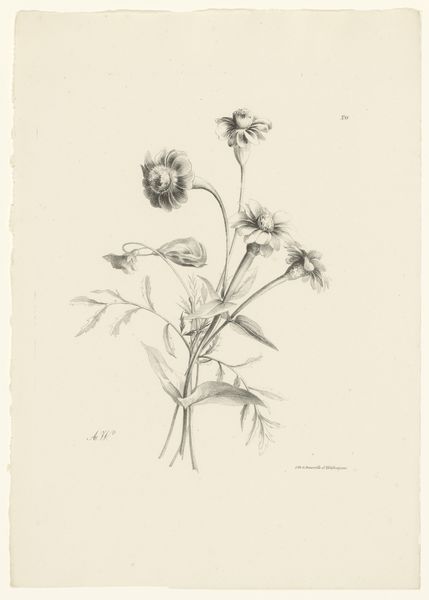
print, etching
# print
#
etching
#
geometric
Dimensions: height 496 mm, width 323 mm
Copyright: Rijks Museum: Open Domain
Curator: Barbara Elisabeth van Houten created this etching, “Drie zonnebloemen” or "Three Sunflowers," sometime between 1872 and 1950. It’s a fairly small print. Editor: Immediately, I sense a subdued, almost melancholic mood. The monochromatic palette lends a gravitas that I wouldn’t expect from a subject typically associated with joy. Curator: Interesting observation. Van Houten, born into a prominent artistic family in The Hague, would have certainly been exposed to prevailing artistic styles like the Hague School, which often depicted somber landscapes and scenes from everyday life. Perhaps this influenced her approach to a seemingly cheerful subject. Editor: Sunflowers, of course, carry powerful symbolism. They represent adoration, longevity, and unwavering faith, forever facing the sun. Yet here, they feel… weighed down, burdened. It almost reads as a memento mori. Curator: I agree, that interplay is striking. We know Van Houten engaged with traditional printmaking techniques. She trained at the Academy and would have been expected to embrace conventional approaches. This work feels like she subtly challenged those expectations, taking the familiar still life subject and giving it a darker, more introspective edge. The use of etching, with its fine lines, allows for incredible detail but also lends itself to a slightly ghostly effect. Editor: It's in that contrast, between the implied symbolism and the visual treatment, that the piece resonates. These aren't idealized flowers in their prime, they’re at an end of cycle. This makes this much more than just decorative; it touches on deeper reflections about time and impermanence, doesn't it? Curator: Absolutely, it really speaks to how even the most seemingly straightforward subjects can become vehicles for complex social and psychological ideas when filtered through a unique artistic sensibility. Van Houten provides her unique viewpoint that might go unnoticed in another artist’s work. Editor: Yes, the imagery prompts questions about the meaning of hope and beauty in a world constantly in flux. It’s much richer than a simple floral study.
Comments
No comments
Be the first to comment and join the conversation on the ultimate creative platform.
